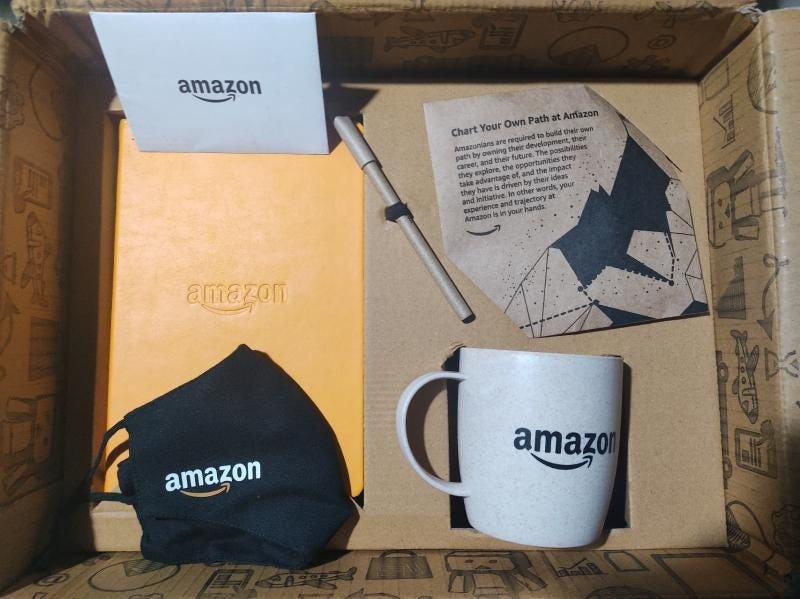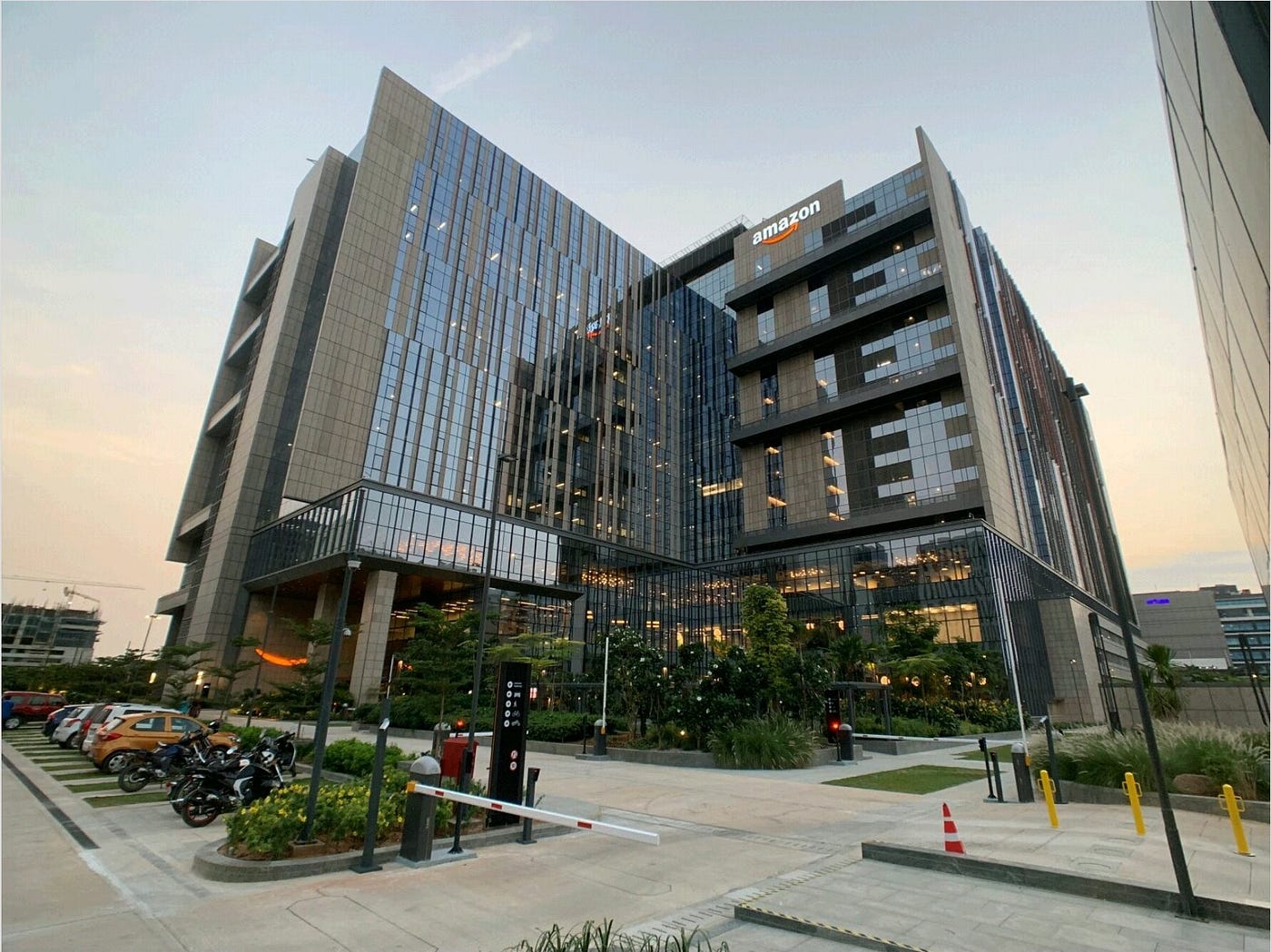Internship at Amazon India
In this post, I would be sharing my experience doing an internship at Amazon, the selection process, and how I prepared for it.
Preparation and Selection Tests
I read previous test experiences from GFG, and knew that Amazon asks the standard questions in online assessment. Also, I practiced questions from Interview Bit and company-specific ones from GFG.
Round 1: Online Assessment
As expected, it was straightforward and consisted of the following sections:
- Code Debug: In this portion of the online assessment, which was given approximately 20 minutes, it was asked to find bugs in seven snippets of code. STL was allowed.
- Coding Test: This portion of the online assessment consisted of a coding section which allowed Java, Python, C#, or C++ (my choice), and the time given was approximately 70 minutes. Questions were elementary. I don’t remember the questions exactly, but all the questions were standard questions of elementary difficulty level, such as palindrome check, minimum difference between two numbers in an array, and so on.
- Work Styles Assessment: This was built around Amazon’s Leadership Principles and typically takes 10–15 minutes to complete. In this section, you had to choose to what extent a provided statement represented your work style.
- Logical Ability: During this section, which was given about 35 minutes, there were asked series of problem-solving multiple-choice questions. Speed of completion for each question was not a factor in the score.
Round 2: Face-to-Face Interview
My Interview was scheduled for the next day, for which more than 20 students had been shortlisted.
It started with a general tell me about yourself. While answering, I mentioned that I loved watching cricket. Luckily, the interviewer was also a fan of cricket, and as IPL was going on at that time, he asked me if I watched yesterday’s match, and then we discussed cricket and our favorite teams for the next 3–4 minutes. This discussion truly made me comfortable and helped me to keep calm.
Then, I was asked to share my screen, and he shared a link with me where I have to write my code. He pasted the question on that doc and asked me to provide a solution.
Then, I was asked to code a solution to this. Pretty standard question; I started with a non-optimal approach and then discussed the optimal approach. Then he asked me to write the code for the discussed optimal approach, which I did, and followed up with some questions related to my code involving time and space complexities. He was satisfied with the answer.
After this, I was asked a question similar to this, which I hadn’t seen earlier. I discussed the approach and started writing code, asking for some hints along the way, which he provided. Upon finishing writing the code, he asked me to explain the same. I was not sure of my answer, and after some time of discussion, the time was up. There were no further rounds.
The results came after 2–3 days. A total of 11 students had been selected. We received the offer letter in April, and the internship duration was to be eight weeks: from second week of May to first week of July.
Internship

Goodies!
We received welcome goodies in January. Before the start of the Internship, we were given the option to choose between virtual and hybrid mode (which involved relocating to Bengaluru). But due to the second wave, the hybrid option was cancelled and everyone had to contend with a virtual intern.
Before Day 1, I received a MacBook Pro and its accessories including a bag, and a headphone.
Week 1: We had the Day 1 Onboarding, and the Students Team helped us understand and get familiar with how things work at Amazon. During the orientations, they also introduced to us the core leadership principles that Amazon follows. After the orientation, My manager called me and I was introduced to my Mentor and onboarding buddy as well. Later in the week, I was assigned the project along with the resources necessary to learn the prerequisites.
Week 2–5: I started working on the project from week 2, my mentor helped me to break my project into sub-tasks and timeline, which helped me stay on track. The internal tools and support system inside Amazon were very amazing.
There was a internal demo with the team after some initial implementation in week 4. I completed the initially decided goals, by the end of week 5.
Week 6–7: I was assigned some additional/stretch goals to be done in the next half of the internship, which I completed in these next 2 weeks.
Final Week: I completed the documentation, and did a final presentation to my team. The internship ended with a performance review from my manager and mentor.
About the Project
I got to know about my team and manager on Day 1. I was in the Amazon Aurora Storage team, which is a relational database service developed and offered by Amazon Web Services.
At the beginning there were ten members in the team; which grew as few other interns joined the team. Here, you get to work on individual projects under the guidance of your mentor and team. My project was to monitor live CPU utilization of a system within MySQL engine, and when CPU utilization is at peak, throttle the less important processes like read ahead and batched read for scan queries, and instead give more CPU resources to more important process like Online Transactional Processing (OLTP). Dynamically changing the configuration parameters improves the OLTP performance when there are parallel queries going on, and it also improves the standalone scan query latency.
We used to have daily standup meets at 10:30am, where everyone in the team updated about their work from yesterday and their plan for today. It was crucial to write clean code, get your code reviewed, and complete your project on time.
Perks
- Flexible working hours.
- A MacBook Pro and all its accessories for work.
- Fifteen days accommodation in a 4 star hotel*
- You get a pickup & drop cab from your location to office*
- You get flight tickets from your hometown to located city*
- At the beginning of every month, Rs 1100/- are credited to your zeta account, which you can use in the cafeteria*, or on Zomato and Swiggy.
*if onsite Internship (sigh)

Amazon Office, Hyderabad
General Tips
- Make sure you get your resume scrutinized by your seniors.
- While answering the coding question, first explain the brute force approach, then try to optimize it. Don’t start with the optimized solution even if you know it beforehand.
- Think Aloud. Clearly explain your approach to the problem. This is more important than giving the correct answer itself.
- Involve the Interviewer. Take feedback from the interviewer on your approach. However, it should not be done excessively.
- Why you think so is as important as what you think. You should be able to conceptually support every word you speak.
